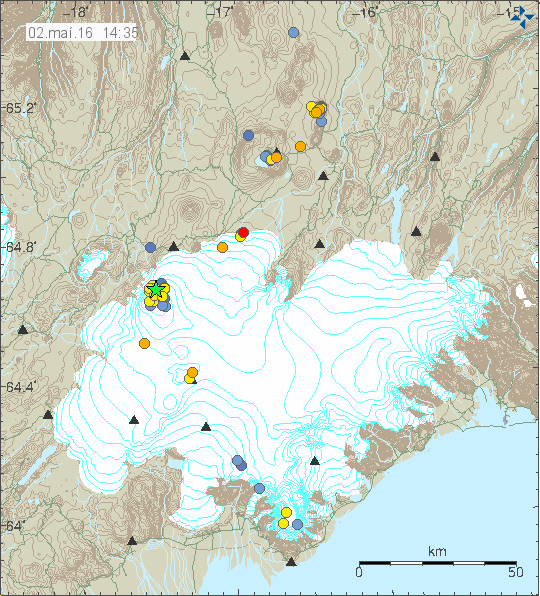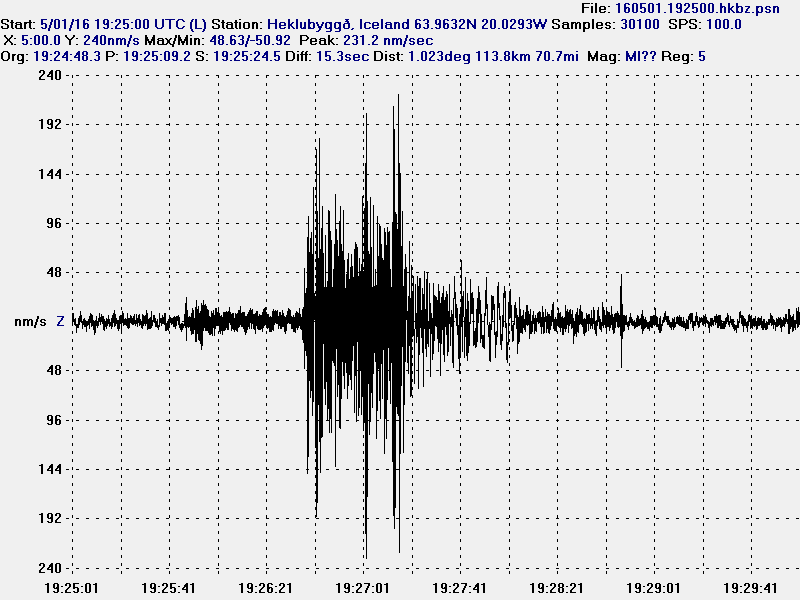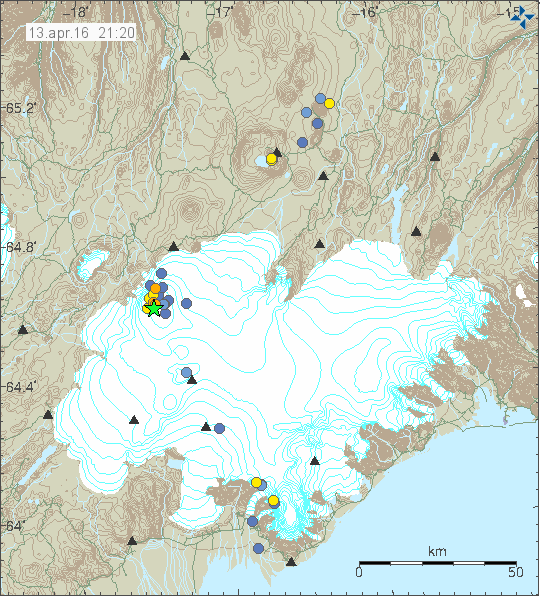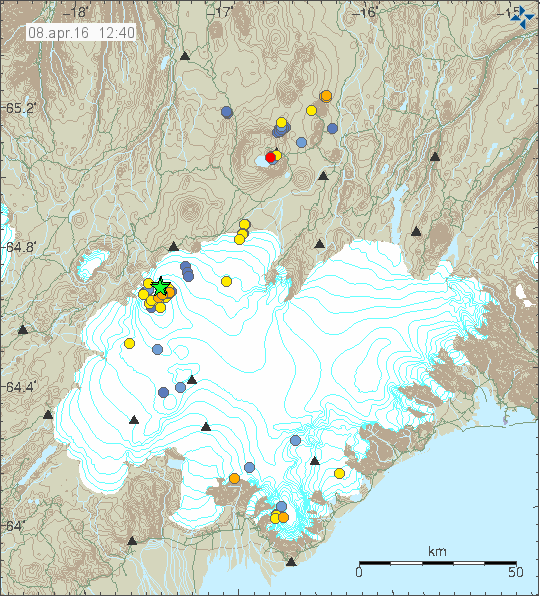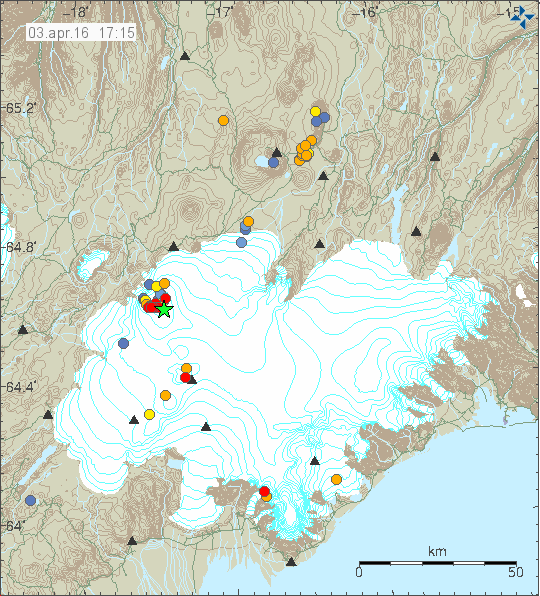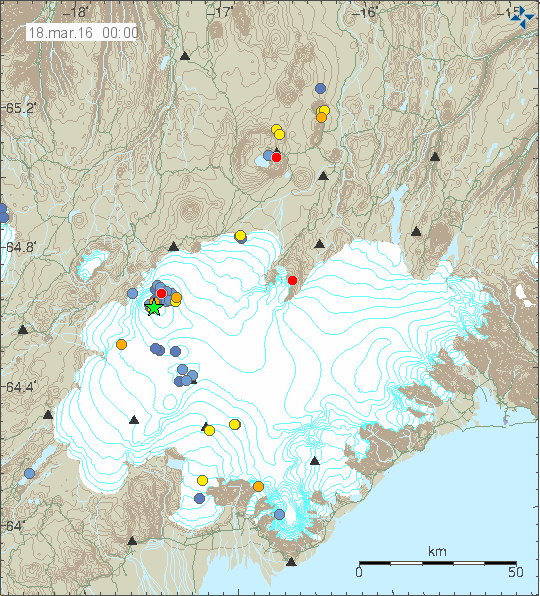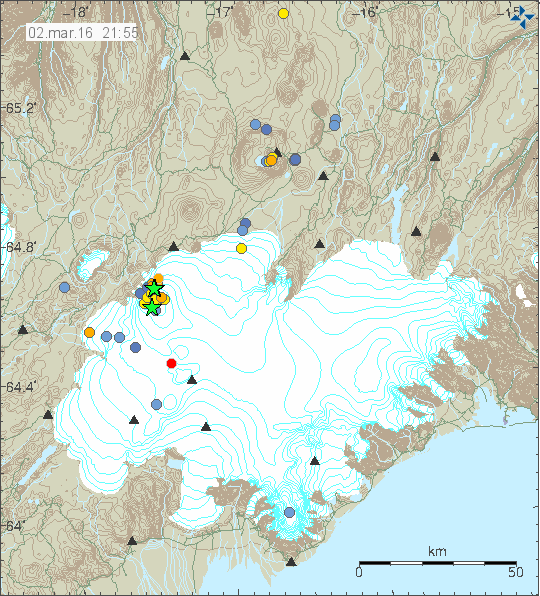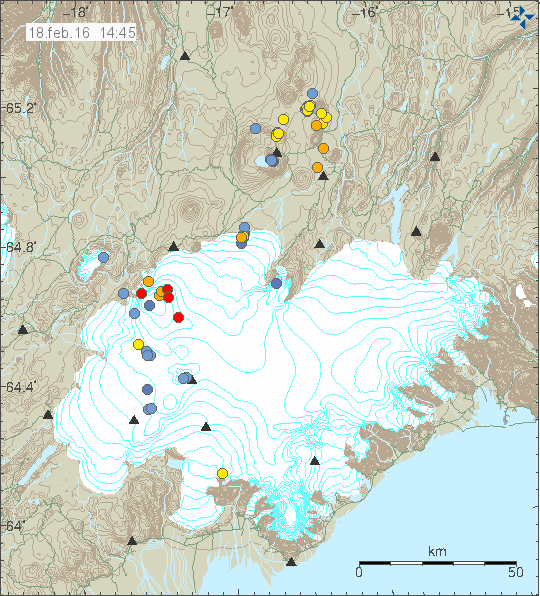This is a short update of earthquake activity in Iceland on 28-February-2016.
Bárðarbunga volcano
Over the past 48 hours there has been earthquake activity and dyke activity in Bárðarbunga volcano. Some of this earthquake activity has been on around 15km depth. Suggesting magma movements within Bárðarbunga volcano system. Earthquake activity always seems to increase few hours to days after a swarm of deep earthquakes appear in Bárðarbunga volcano.
A dyke activity has appeared on the edge of Bárðarbunga volcano, it is located south-east in the volcano. In a area that has seen this type of dyke activity before. It is interesting that this activity seems to persist at this location.
Tungnafellsjökull volcano
Over the past few days few earthquakes have appeared in Tungnafellsjökull volcano. Some of those earthquakes have had the depth around 15 km. This suggest some type of magma movements inside the volcano, but nothing that suggests that its going to reach the surface any time soon.
Askja volcano
Earlier this week (Week 08) an deep earthquake swarm took place in Askja volcano. With earthquakes having the depth down to around 22 km. Suggesting that magma is flowing into Askja volcano magma chamber at depth. This has been happening at regular basis since 2010. At the moment there is nothing suggesting that eruption is going to happen any time soon in Askja volcano.
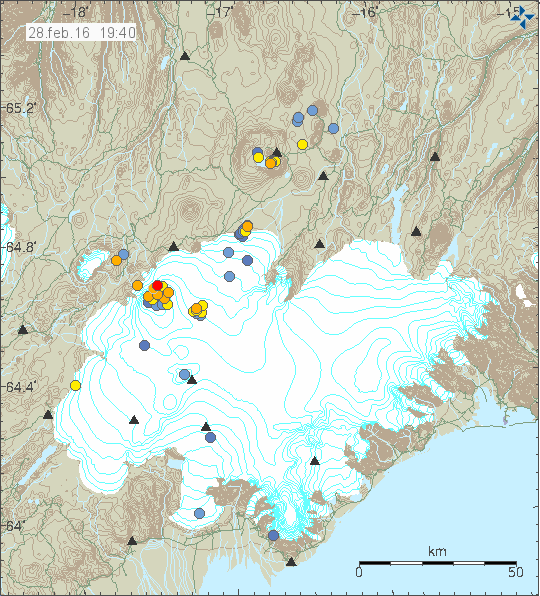
Earthquake activity in Bárðarbunga, Tungnafellsjökull and Askja volcano. Copyright of this image belongs to Iceland Met Office.
Katla volcano
There was some minor earthquake activity in Goðabunga in Katla volcano. This appears to be normal activity for this region of Katla volcano. No other interesting activity took place this week (Week 08) in Katla volcano.
Hekla volcano
Two earthquake where detected in Hekla volcano. Nothing else happened following this earthquake activity. Why this earthquake activity happens remains unclear.
Torfajökull volcano
A minor earthquake activity took place in Torfajökull volcano during the weekend. This activity is possibly due to changes in hyrdrothermal areas in Torfajökull volcano.
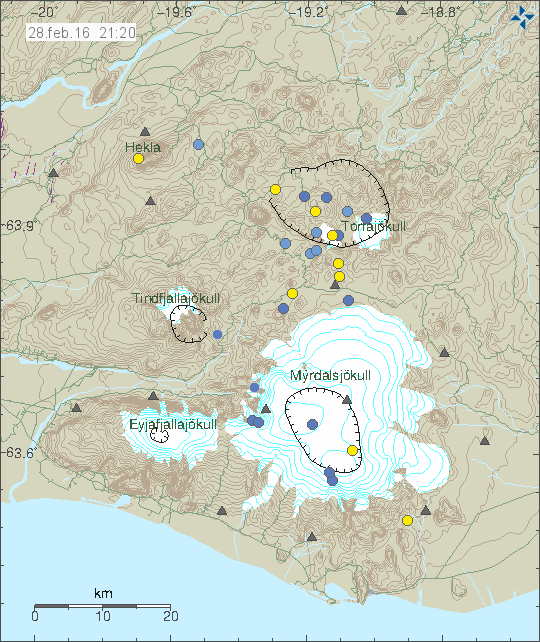
Earthquake activity in Katla, Torfajökull and Hekla volcano. Copyright of this image belongs to Iceland Met Office.
Other than this activity things remain quiet in Iceland. There are few minor earthquake swarms on Reykjanes peninsula and Tjörnes Fracture Zone. But they are too small at the moment to write about.
Donations
Please remember to support me with donations. The new computer left a big hole in my budget and any support in order to cover it are welcomed. Thanks for the support. 🙂
Move to Denmark
It is now official. I’m moving back to Denmark on 14. April, with just few minor details left to work out (getting a loan for the apartment insurance and few other things). I’ll move into my new apartment on the 15th April. More details later next weeks when I know about the apartment loan.
